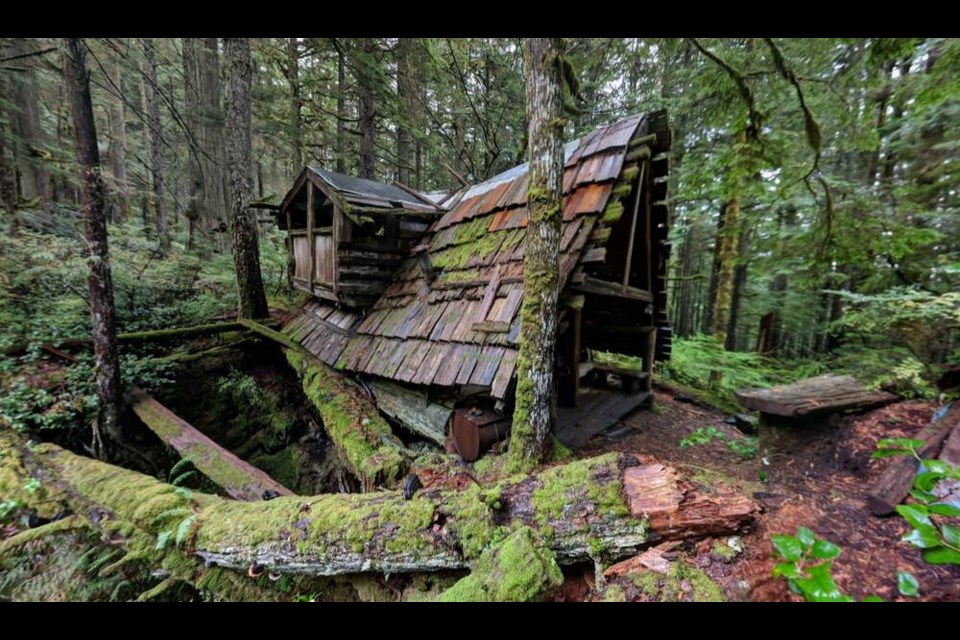A blaze that burned through 3,000 square metres of forest in the Lower Seymour Conservation reserve was probably sparked by people who were accessing a decades-old hut in the remote area, an investigation has found.
After a flood of public reports, local agencies became aware of around 4:15 p.m. on July 13. Water bombers and helicopters hit the site continuously throughout the evening, and ground crews got to work the next morning. By the weekend, the blaze wasn’t spreading any further, and firefighters continued cleanup work into the following week.
As the investigation got underway, the North Shore News learned of a . Metro Vancouver – the lead agency on the firefighting effort – said that it had been aware of the hut for a few months and had plans to dismantle it.
Now that the investigation has concluded, the cause of the fire is officially “undetermined,” as no direct ignition source could be located, said Assistant Fire Chief Monty Armstrong with District of North Vancouver Fire and Rescue Services, the agency that led the investigation.
There was also no evidence of natural causes, he said.
“There is no sign of lightning in the area, we didn’t have any evidence that it struck. So there are no natural causes that we’ve been able to find. That would lead us to a human-caused fire.”
There was evidence to suggest that people had been accessing the hut, Armstrong said, leading investigators to speculate that related activities could have caused the wildfire.
“We know humans were there. Human behaviour would have had an influence,” he said. The hut is probably decades old, Armstrong added. There are also several other huts in the area.
“I’ve heard anecdotally there are 50 to 100 cabins in the area, which would make sense if you think, 50 or 60 years ago, people would go out and build cabins,” he said.
Metro Vancouver has a plan to remove the cabins, Armstrong said, but doesn’t know what the timeline is for removing them.
But while they’re there, any cabins or huts that act as a destination for hikers could cause a fire risk to the watershed, he said, adding that it is important that the area be protected from wildfires.
“Hypothetically, if you had a rather large wildfire go through there, that may lead to possible landslides or flooding because the ground is changed, you know, which may damage the water supply in the following seasons,” Armstrong said.
A major fire in the Metro area would also affect air quality, which could impact people with respiratory conditions, he added.




